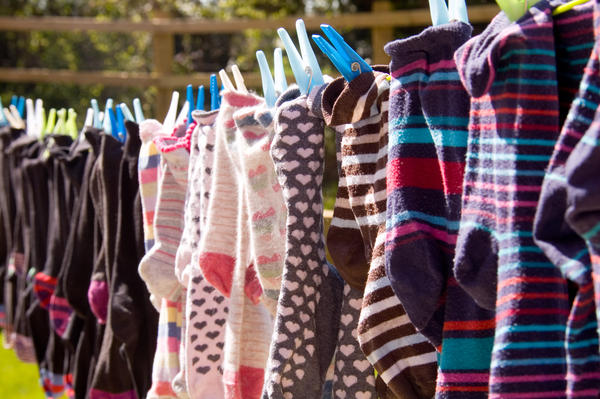
30 Jul How To Clean When You Have A Fungal AND/OR Wart Infection

We see patients who suffer with fungal and HPV (wart) infection on a daily basis. One the most common questions we get asked is how do I clean my shoes and clothes. Here are some tips and tricks you can do to prevent the spread of these infection.
Fungal Infection
Q: How do fungal spread?
A: Fungus spores present in the human skin can shed onto hard surfaces like changing rooms, swimming pools and communal places. They also shed onto socks, shoes, damp workout clothes, and towels. Skin that is exposed to excessive moisture and warmth i.e. shoes, encourages the fungus to grow. Researchers from the Institute for Hygiene and Biotechnology at the Hohenstein Institute in Boennigheim (Germany) has proven infected socks and other garments can transmit the fungus to other textiles i.e. laundry basket or hamper. If fabrics are not washed in hot water and disinfected, the fungus can survive in the washer and continue the chance of infection or reinfection. The athlete’s foot fungal infection can spread to hands and other parts of the body if left untreated.
HPV (Wart) Infection
Q: How do they spread?
A: Wart infection spread very similar to fungal infection. They thrive in warm moist surfaces that allows them to readily transfer via the transmission of heat and water. Warts are extremely resilient and therefore, it is crucial that you abide to a strict protocol of your cleaning method to prevent continuation of infection or re-occurrence while treating the wart.
Methods for Infection Management
Q: What are some tips and tricks?
A: Here some suggestions for both fungal and wart infections:
- Separate infected socks, towels, and other exposed laundry from other items. This can be done with a mesh bag for holding laundry that can be thrown into the washer to be cleaned with each load. If using a plastic basket to separate fungus-exposed laundry, wipe it down with a diluted solution of chlorine bleach and water while each load is in the washer.
- Disinfect gym bags regularly and shoes after each wear. If they cannot be washed in hot water, use disinfectant wipes or a cloth dipped in diluted chlorine bleach and water for a thorough inside cleaning. Allow to air dry at least 24 hours or completely before using again.
- Use hot water (60 C) and your regular detergent for infected laundry. Lower temperatures will not kill the fungus and can transfer spores to other fabrics in the same load.
- For white cotton socks, you can use chlorine bleach along with the hot water to disinfect the fabric.
- For wool socks that cannot be washed at a high temperature, disinfect using a non-chlorine disinfectant i.e. 3% hydrogen peroxide or white vinegar and cold water wash.
- Dry fabrics on the highest temperature in a tumble dryer to ensure further infection is eliminated.
If you have a fungal or wart infection and currently treating, it is VERY IMPORTANT that you read this post to maximise the success of eliminating these infections. If you struggle to treat these infections and/or notice them spreading, please visit a podiatrist who can further examine and find a solution for you.
Reference: Mary Leverette (2018), How to Prevent the Spread of Athlete’s Foot in Laundry. Derek (2018), What Kill Plantar Wart Virus on Surfaces
Call us at 6293 2024
Email: info@brindabellapodiatry.com.au
Book An Appointment – click the link below: https://canberraingrowntoenail.com.au/book-now/
Written by Lydia Kim



